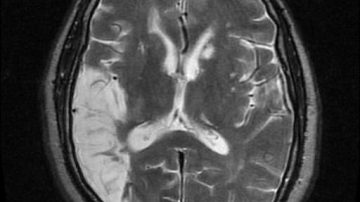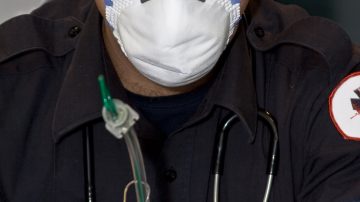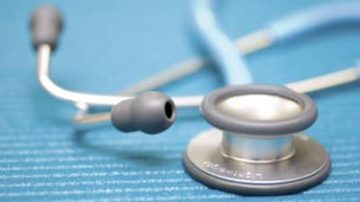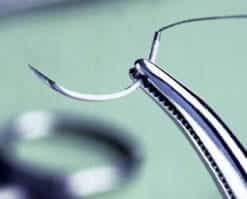Avoid Routine Proton Pump Inhibitor Therapy for Prophylaxis in Hospitalized Patients Preface: A retrospective study at a Boston hospital examined the effect of routine proton pump inhibitor therapy in hospitalized stroke patients. No clear benefit was seen and multivariate analysis…
Read MoreAdvise patients to drink at least 2 L daily; consider thiazide diuretics, citrate therapy and allopurinol for patients with “active” calcium stone formation. American College of Physicians (ACP) Key Recommendations Increased fluid intake to achieve 2 L of urine output daily…
Read MoreIn a new meta-analysis, early management of non–ST-segment elevation myocardial infarctions with thienopyridines was not associated with significantly lower mortality and did not lower major adverse cardiovascular event rates for those eventually undergoing PCI. Current ACC/AHA guidelines support dual antiplatelet…
Read MoreThe American Heart Association/American Stroke Association has updated its comprehensive acute ischemic stroke care guidelines in 2013. The following is a summary of the most important new recommendations: Teleradiology networks are recommended for community hospitals that lack access to neurological…
Read MoreCardiac arrest patients who were intubated had similar outcomes to those who had a supraglottic airway device (e.g., King tube) inserted in the pre-hospital setting. A literature review of 5 studies and over 300,000 patients with pre-hospital cardiac arrest demonstrated…
Read MoreA recent study concluded that assessing the ability of patients to list the months of the year backwards in addition to an assessment of subjective confusion and disorientation was accurate at diagnosing delirium in hospitalized adult patients. The months of…
Read MorePreface: Nice summary of the changing pathogenic organisms causing severe sepsis. This summary also displays how improved sepsis recognition and management has decreased mortality from 40% to 28% over the last decade. Mortality decreased from 40% to 28% overall. Although…
Read MorePreface: The SPARCL trial made clinicians wary that high-dose statins may increase the risk of intracranial hemorrhage (ICH). This new observational study suggests that continued statin use after ICH appears to improve outcomes. The SPARCL trial (Stroke Prevention through Aggressive Reduction…
Read MorePreface: New study identifies 7 interventions to decrease the 30-day readmission rates. The most effective interventions involved case workers and Improving patients ability to provide self-care at home. Study design: Meta-analysis. Setting: Forty-seven studies in multiple locations. Synopsis: This study evaluated…
Read MoreA large cohort study out of Denmark examining over 17,000 ER visits by adults determined that the absence of all three criteria fever, elevated CRP and SIRS criteria had a 99.5% negative predictive value for excluding bacteremia. Fever, elevated CRP level,…
Read MoreIn three single-center, randomized trials, oral contrast — given in addition to intravenous (IV) contrast — did not improve the diagnostic accuracy of computed tomographic (CT) scanning for suspected appendicitis. To determine whether this conclusion is generally valid, researchers analyzed…
Read MoreMild hypothermia is standard of care for comatose survivors after cardiac arrest. Now there is new evidence that survivors of PEA arrest do better neurologically compared with survivors of VF/VT arrests. A retrospective, single-center study shows comatose survivors with shockable…
Read MoreIn a randomized trial, absorbable sutures achieved cosmetic results and complication rates similar to those of nonabsorbable sutures in both children and adults. Absorbable sutures have been demonstrated to be safe and effective for repair of facial lacerations (NEJM JW…
Read MoreFor decades we have relied on static measurements of volume status such as central venous pressure, pulmonary artery occlusion pressure and right ventricular end diastolic volume. CVP has been shown to have little better than a coin toss chance of…
Read MoreEarly Registration Discount for ALL 2014 Hospitalist and Emergency Procedures CME courses is now $150 for physicians and $200 for nurse practitioners, physicians assistants, medical students, resident physicians, and military physicians Click Here for PDF version May 13, 2014 –…
Read MoreCategories
- ACLS (1)
- Arterial line (33)
- Cardiovascular diseases (77)
- Central line (55)
- Chest Tube (39)
- Dermatology (4)
- Emergency Procedures (139)
- Endocrinology (6)
- Endotracheal Intubation (36)
- Events (24)
- FAST Exam (12)
- Featured (113)
- Featured Procedure (42)
- Gastrointestinal diseases (32)
- Ginecology (3)
- Glidescope Intubation (21)
- Hematology (33)
- Hospital Procedures (85)
- Infections (32)
- Intraosseous line (8)
- King Tube (27)
- Laryngeal Mask Airway (18)
- Lumbar Puncture (36)
- Mechanical Ventilation (34)
- Medical General (95)
- medical procedures (258)
- Needle Decompression (6)
- Nephrology (11)
- Neurological diseases (12)
- Oncology (4)
- Paracentesis (32)
- Pericardiocentesis (3)
- Procedural Sedation (19)
- Respiratory diseases (85)
- RUSH Exam (8)
- Thoracentesis (37)
- Traumatology (24)
- Travel (27)
- Ultrasound-Guided Peripheral IV (13)










